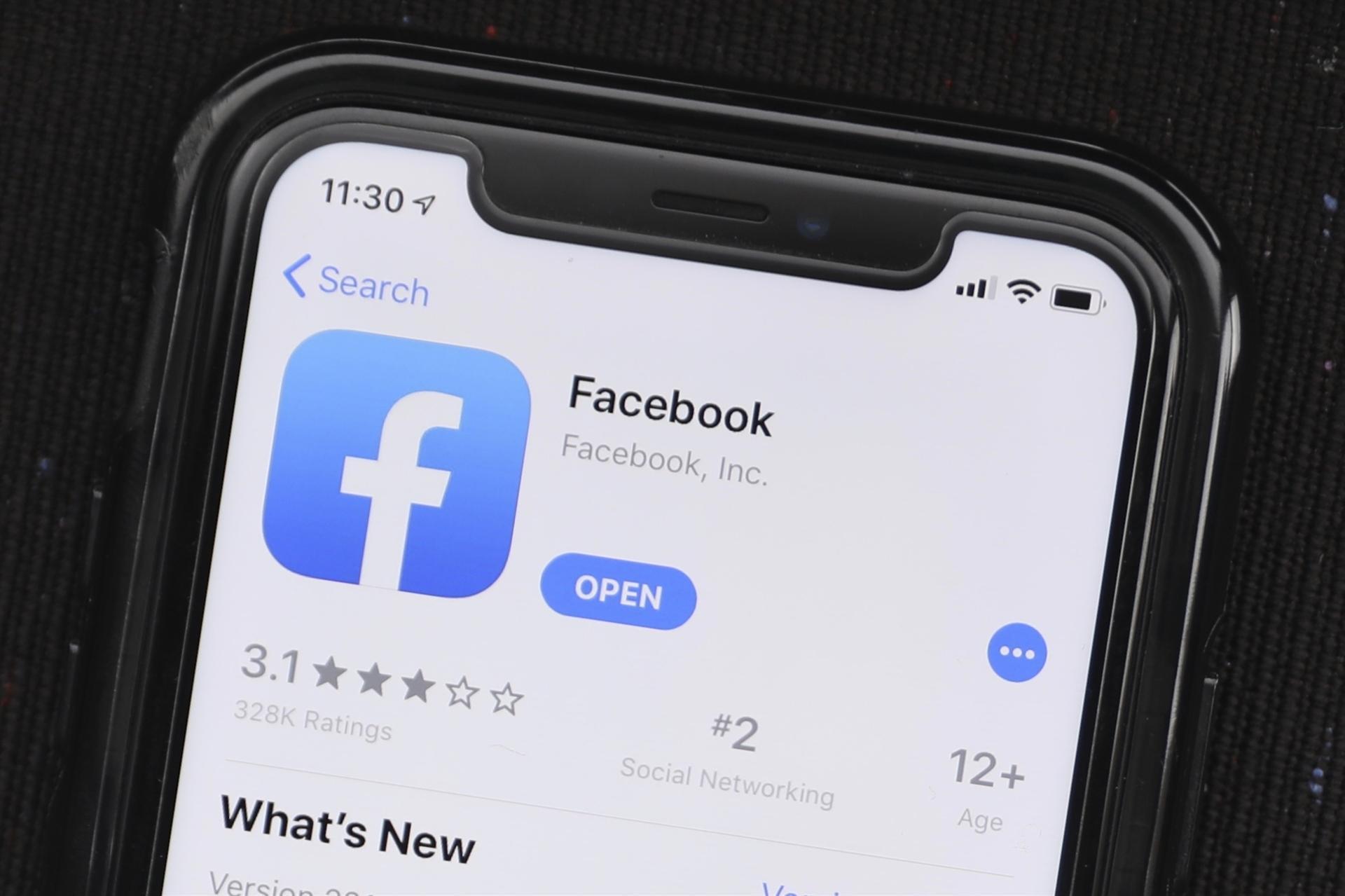Facebook removes Trump ads with symbols once used by Nazis
WASHINGTON-The Associated Press

Facebook has removed campaign ads by President Donald Trump and Vice President Mike Pence that featured an upside-down red triangle, a symbol once used by Nazis to designate political prisoners, communists and others in concentration camps.
The company said in a statement on June 18 that the ads violated "our policy against organized hate." A Facebook executive who testified at a House Intelligence Committee hearing on June 18 said the company does not permit symbols of hateful ideology "unless they're put up with context or condemnation.''
"In a situation where we don't see either of those, we don't allow it on the platform and we remove it. That's what we saw in this case with this ad, and anywhere that that symbol is used, we would take the same action," Nathaniel Gleicher, the company's head of security policy, told lawmakers at a hearing.
The Trump campaign spent more than $17,000 on the ads for Trump and Pence combined. The ads began running on June 17 and received hundreds of thousands of impressions.
In a statement, Trump campaign communications director Tim Murtaugh said the inverted red triangle was a symbol commonly used by antifa so it was included in an ad about antifa. He said the symbol is not in the Anti-Defamation League's database of symbols of hate. The Trump campaign also argued that the symbol is an emoji.
"But it is ironic that it took a Trump ad to force the media to implicitly concede that Antifa is a hate group," he added.
Antifa is an umbrella term for leftist militants bound more by belief than organizational structure. Trump has blamed antifa for the violence that erupted during some of the recent protests, but federal law enforcement officials have offered little evidence of this.
Some experts disputed that the red triangle was commonly used as an antifa symbol.
European anti-fascist groups initially used the red triangle as a symbol, hoping to reclaim its meaning after World War II, but it is no longer widely used by the movement nor by U.S. antifa groups, said Mark Bray, a Rutgers University historian and author of "Antifa: The Anti-Fascist Handbook.''
The ADL said the triangle was not in its database because it is a historical symbol and the database includes only those symbols used by modern-day extremists and white supremacists.
"Whether aware of the history or meaning, for the Trump campaign to use a symbol one which is practically identical to that used by the Nazi regime to classify political prisoners in concentration camps to attack his opponents is offensive and deeply troubling,'' ADL chief executive officer Jonathan Greenblatt said in a statement.
Even with the ads removed, Facebook and CEO Mark Zuckerberg, still face persistent criticism for not removing or labeling earlier posts by Trump that spread misinformation about voting by mail and, many said, encouraged violence against protesters during recent unrest in American cities.
Those questions arose anew during June 18's hearing as Democrats pressed the executives about what moral obligations they felt they had when it came to content and about decisions they've made to remove, label or leave up false or incendiary posts.
Facebook, for instance, was asked why it did not swiftly remove a doctored video of House Speaker Nancy Pelosi, D-Calif., last year that appeared to show her slurring her words.
"If we simply take a piece of content like this down, it doesn't go away,'' Gleicher responded. "It will exist elsewhere on the internet.
People who are looking for it will still find it.''
Later on June 18, Twitter labeled a video Trump had posted as "manipulated media.'' The president had tweeted a doctored video of two young children with a fake, misspelled CNN headline of "Terrified todler runs from racist baby.'' For the first time last month, Twitter began flagging some of Trump's tweets with a fact-check warning.
With June 18's hearing focused on the spread of disinformation tied to the 2020 election, the companies said they had not yet seen the same sort of concerted foreign influence campaigns like the one four years ago, when Russian sowed discord online by playing up divisive social issues.
But that suggests the threat has simply evolved rather than diminished, said the executives, who pointed out that media entities linked to foreign governments were now directly engaging online on American social issues as a way to influence public opinion. Chinese actors, for instance, have likened allegations of police brutality in the U.S. to the criticism China faced for its aggressive treatment of protesters in Hong Kong.
"That shift from platform manipulation to overt state assets is something that we've observed," said Nick Pickles, Twitter's public policy strategy and development director.
The companies say they have accelerated efforts to root out fake accounts. Twitter, for instance, said it had challenged in the first six months of 2019 more than 97 million accounts that showed signs of platform manipulation, and Facebook said it had disabled about 1.7 billion fake accounts between January and March.
Preventing disinformation ahead of the election is a significant challenge in a country facing potentially dramatic changes in how people vote, with the expected widespread use of mail-in ballots creating openings to cast doubt on the results and spread inaccurate narratives.
Facebook said on June 18 that it is working to provide Americans with accurate information about the vote-by-mail process, with notifications to users about how to request ballots and about whether the date of their election has changed. The outreach is targeted to voters in states where no excuse is needed to vote by mail or where fears of the coronavirus are accepted as an excuse.
"Providing that accurate information is one of the best ways to mitigate those types of threats,'' Gleicher said.
Court rejects Trump bid to end young immigrants’ protections
In the meantime, the Supreme Court on June 18 rejected Trump’s effort to end legal protections for 650,000 young immigrants, the second stunning election-season rebuke from the court in a week after its ruling that it’s illegal to fire people because they’re gay or transgender.
Immigrants who are part of the 8-year-old Deferred Action for Childhood Arrivals Program will retain their protection from deportation and their authorization to work in the United States — safe almost certainly at least through the November election, immigration experts said.
The 5-4 outcome, in which Chief Justice John Roberts and the four liberal justices were in the majority, seems certain to elevate the issue in Trump’s campaign, given the anti-immigrant rhetoric of his first presidential run in 2016 and immigration restrictions his administration has imposed since then.
The justices said the administration did not take the proper steps to end DACA, rejecting arguments that the program is illegal and that courts have no role to play in reviewing the decision to end it. The program covers people who have been in the United States since they were children and are in the country illegally. In some cases, they have no memory of any home other than the U.S.
Trump didn’t hold back in his assessment of the court’s work, hitting hard at a political angle.
“These horrible & politically charged decisions coming out of the Supreme Court are shotgun blasts into the face of people that are proud to call themselves Republicans or Conservatives. We need more Justices or we will lose our 2nd Amendment & everything else. Vote Trump 2020!” he wrote on Twitter, apparently including the LGBT ruling as well.
In a second tweet, he wrote, “Do you get the impression that the Supreme Court doesn’t like me?”
Later, he said the decision showed the need for additional conservative justices to join the two he has appointed, Neil Gorsuch and Brett Kavanaugh, and pledged to release a new list from which he would choose a nominee if another opening occurs on his watch. Both of his appointees dissented on June 18, though Gorsuch wrote the LGBT rights ruling.
Democratic presidential contender Joe Biden pledged to send Congress proposed legislation on his first day in office to make DACA protections permanent.
Roberts, with whom Trump has sparred, wrote for the court that the administration did not pursue the end of the program properly.
“We do not decide whether DACA or its rescission are sound policies,“ Roberts wrote. “We address only whether the agency complied with the procedural requirement that it provide a reasoned explanation for its action. Here the agency failed to consider the conspicuous issues of whether to retain forbearance and what if anything to do about the hardship to DACA recipients.”
The Department of Homeland Security can try again, he wrote. But any new order to end the program, and the legal challenge it would provoke, would likely take months, if not longer.
“No way that’s going to happen before November,” said Stephen Yale-Loehr, a professor of immigration law practice at Cornell University Law School.
The court’s four conservative justices dissented. Justice Clarence Thomas, joined by Justices Gorsuch and Samuel Alito, wrote that DACA was illegal from the moment it was created under the Obama administration in 2012. Thomas called the ruling “an effort to avoid a politically controversial but legally correct decision.”
Alito wrote that federal judges had prevented DACA from being ended “during an entire Presidential term. Our constitutional system is not supposed to work that way.”
















